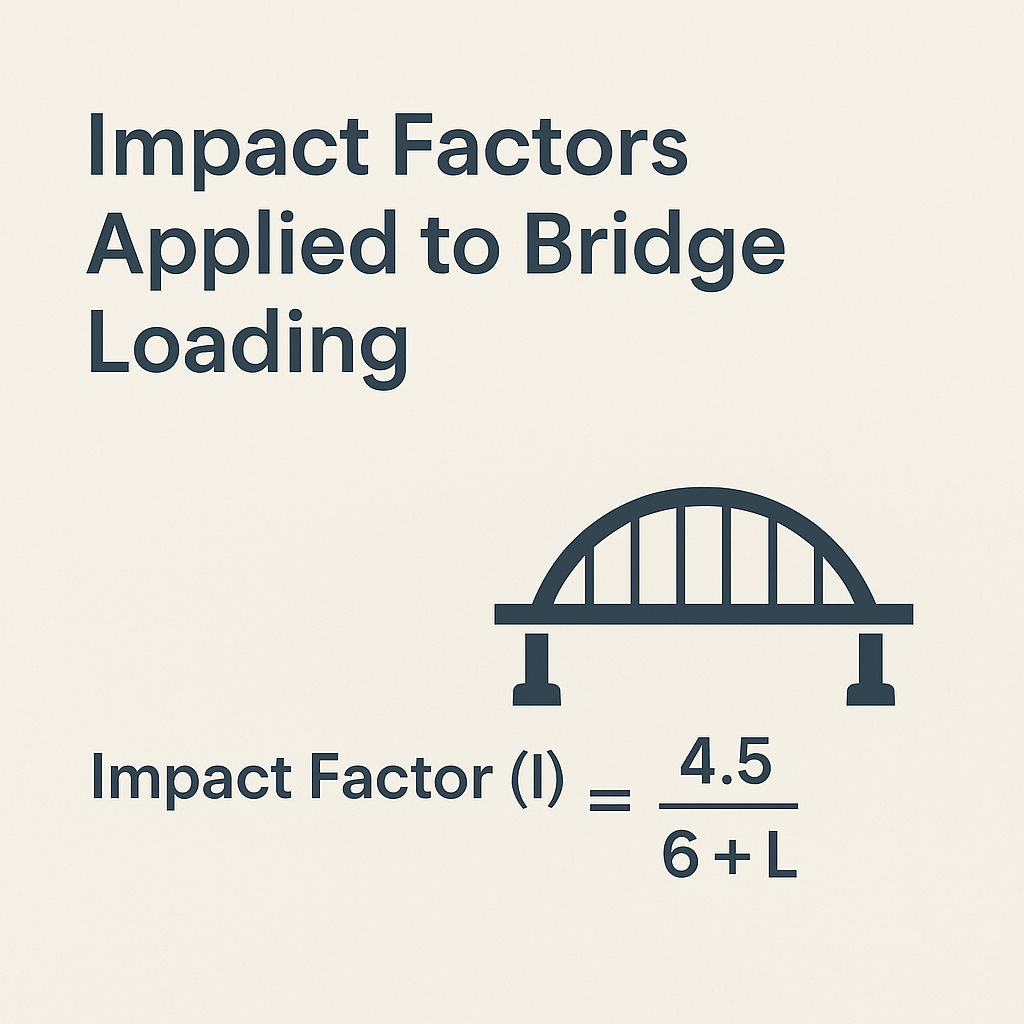Impact factors are introduced to amplify the effect of dynamic loading such as vehicular load to enhance the magnitude of the load.
Generally, the impact factors are applied as a fraction of dead load. For the case of India, the value and
Calculations of Impact Factor as per IRC: 6-2000
For the IRC Class A loading
I=A/(B+L)
Where,
- I = Impact factor fraction
- A= A constant having the value of 4.5 for reinforced concrete bridges and 9.0 for steel bridges
- B = A Constant having a value of 6.0 for reinforced concrete bridges and 9.0 for steel bridges
- L = Span in Meters
Impact Factor for the IRC Class AA or 70 R Loading
Impact Factor for Spans Less than 9 m
For tracked vehicle – 25% of the span up to 5 m linearly reduced to 10% for span of 9 m
For wheeled vehicle – 25%
Impact Factor for Bridges Spanning Over 9 m
For tracked vehicles on RC Bridges, the value of impact factor is 10% up to a span of 40 m and for bridge built up of steel truss 25% for spans up to 23 meters.
Values of Impact Factor allowance for the British Standard Loading
For HA loading, the British standards are giving an allowance of 25% of the heaviest loading axle of the loading train from which we calculate the loading
Surprisingly the British standards do not stipulate the impact allowance for HB loading as it is considered as abnormal loading.
Factors Affecting Impact Factor to Bridge Loading
- Span Length: Shorter span means higher Impact Factor because of abrupt load changes.
- Vehicle Speed: Higher vehicle speed means higher dynamic amplifications
- Deck Material: Steel Decks have normally higher Impact Factors than concrete decks.
- Road/Track Roughness: Poorer surfaces induce bouncing and increase Impact Factor.
- Support Conditions: Hinged and simply supported spans exhibit more impact sensitivity.
Read Also-
Types of Road Bridges as Per Different Criteria
IRC 5 2015 (Standard Specifications and Code of Practice for Road Bridges)
World’s First 3D-Printed Steel Bridge in Amsterdam
IRC 6 2017 [Loads and Load Combinations] PDF Download
IRC 112 2011 (Code of Practice for Concrete Road Bridges)
External Resources-
